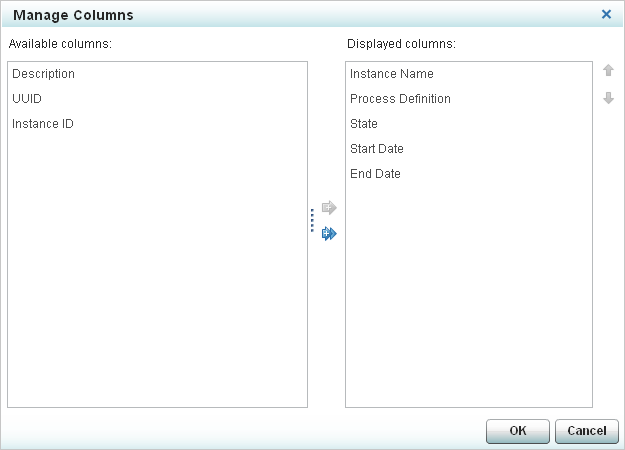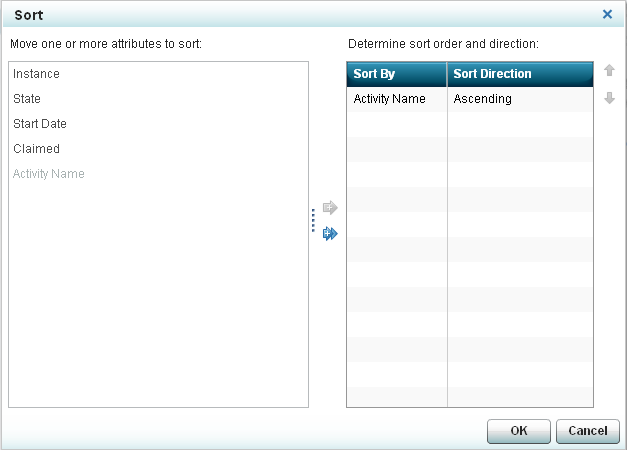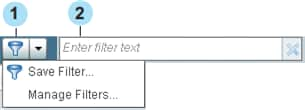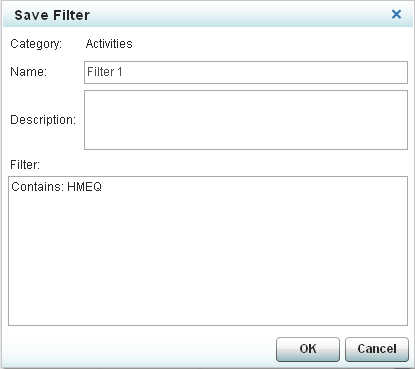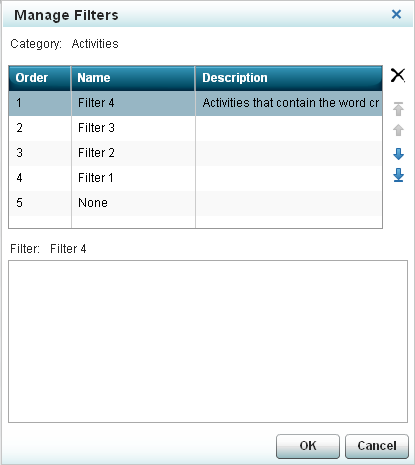Customizing Category Views
Manage Columns in a List
The Manage Columns button displays
the Manage Columns window, which reflects
the current settings of the list. Here is an example of the Manage Columns window.
Tip
You can select a set of noncontiguous
columns in the list and then add, remove, or reposition the selected
set as a single entity.
Note: The workspace filter is applied
to all columns in the view, even to columns that you remove from the Displayed columns list as long as they are still in
the Available columns list. For example,
if you remove the Name column from a list,
the filter still searches for name values and returns results based
on the contents of that column. For more information about using filters,
see Filtering List Content.
Sort Lists by Column Content
Sort Single Columns in a List
Sort Multiple Columns in a List
You can also sort a list by more than one column and,
if desired, in ascending order by some columns and in descending order
by other columns.
The Sort button displays the Sort window, which
reflects the current sort order of the list. Here is an example of
the Sort window.
To add, remove, or reposition
columns in the sort order, use the control buttons that are described
below.
Filtering List Content
About Filtering List Content
You can filter the list
in a category view to view only particular process definitions, instances,
or activities. For example, suppose you want to see the entry for
a project and you use the UUID to identify the project.

